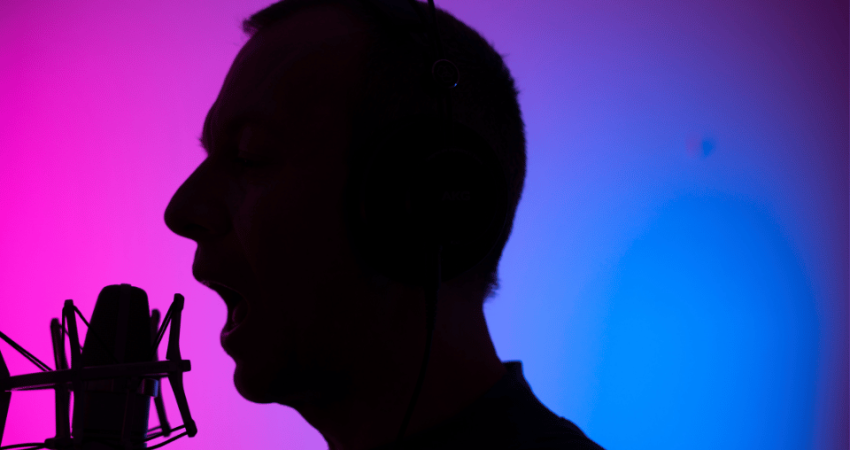How many times have you listened to a lay reader in church or witnessed a reading-aloud event by a high school or college student? For a very high percentage of those times, the reader delivers the lines in droning phrases that seem to anticipate the phrase that follows the one being read, and no one ever ends anything in a statement until he or she comes to a period. That is how nearly all of us read aloud, from childhood to the grave.
On the other hand, when people talk, every phrase, clause, and sentence nearly always ends in a statement. This is because people talk mostly in statements. In other words, nearly every time there is a phrasing pause, it ends in a statement, not an anticipatory hanging inflection. This conveys a sense of purpose and focus to every event within, or at the end of, virtually every phrase, clause, and sentence. Even individual words get a declarative treatment in some situations, which greatly enhances the drama. Unfortunately, “upspeak” is now part of everyday language in some social orders, as in “Valley-Girl talk.” This is not recommended for voice over delivery, except for character imitation.
Now let’s look at stage and film acting for a moment. Some of us took some theater courses in high school and college. A few went on to more serious professional pursuits in the theater arts. However, the theater experience did not address the reading-out-loud-from-copy issue.
In the theater, the first rehearsal of a play usually involves a read-through of the script, some discussions about the nature of the characters in the script, the overall feel of the play, and so on. Then each member of the cast goes home, reads the script over and over, and then memorizes his or her lines. When the actors later begin rehearsal, every line that is delivered, from rehearsal to final performance, is spoken to another actor or delivered as a soliloquy. The actor is given a great deal of expressive freedom, stemming from the fact that he or she has memorized the lines. Every line mimics everyday verbal communication from one person to another. Even the visual imagery of the delivery is there, and it is live.
Therein lies the major difference between stage acting and voice over acting. The actor memorizes and delivers the lines, live, to other actors or to the audience. The voice over actor does not benefit from having memorized the lines, because the voice over session is a one-time event, and the economies of scale do not lend themselves to memorization. He or she usually delivers lines to a microphone with no one else in the room (unless it is a multi-person script, which is rare). There may be a small audience sitting behind a control room window in a studio setting, or the voice actor may be alone in his or her home studio. It’s a stark environment when you consider that a stage actor works on a set with a live audience and is there with other actors to whom he or she can deliver lines in a realistic scenario. For the film actor, it’s even more vivid, since the settings are often much more elaborate.
In a studio environment, however, the voice over actor needs to possess a very fertile imagination, as visual images suggested by the script must be fantasized and experienced as if real. In addition, he or she must conjure up a visualized delivery scenario, wherein the person to whom the lines are spoken is actually seen and reacted to in the actor’s imagination. To clarify, the voice over actor uses two sets of visual imagery—experiencing the visual and situational events described in the script and speaking the message to a live listener.
A major contributing element to the droning effect is the reader’s detachment from the message. We have all picked up this habit by enduring boring classroom situations where we were called on to read aloud, and in the process of doing it, we focused entirely on pronouncing the words correctly and on our own performances. We didn’t think about the meaning of the pieces we were reading. Consequently, most of us learned to read aloud while our brains were on hold, unable to break down the real message and deliver it to our audience. This is a very common phenomenon.
People who read only look ahead and think ahead. People who talk also look back and remember the subjects that have already been introduced. They keep track and have a sense of context.
Now let’s further examine the droning effect. When people read, they are always anticipating what comes next, and consequently, words, phrases, and clauses are delivered in hanging inflections, as if all the elements were in one never-ending list. The only times the reader truly ends these elements is when he or she comes to a period. Thus, the reader can make the assumption that the only real declaration is at the end of the entire sentence. When people talk, a very different scenario unfolds. Each event in a sentence has its own ending. In many sentences, there can be several events with solid endings, because people talk in declarative streams of consciousness. In other words, every event in a sentence is delivered as a statement. Instead of one long droning sentence with one ending, a sentence is broken up into shorter segments that make one assertion after another, with very few exceptions.



